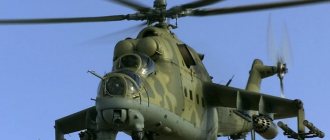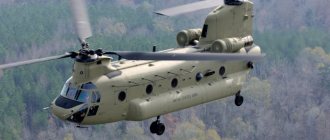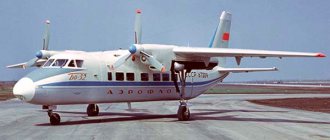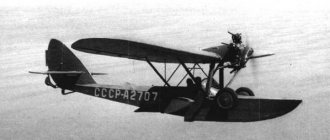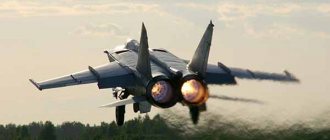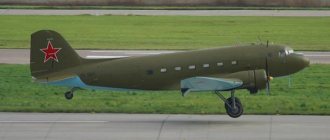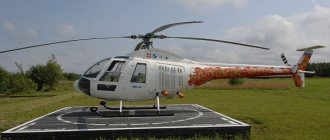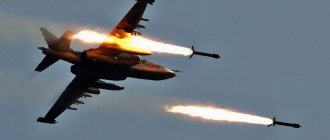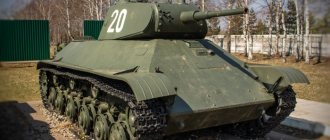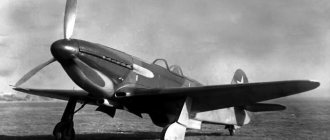Mi-24 is a Soviet/Russian attack helicopter developed by the M. L. Mil Design Bureau. The unofficial name is “Crocodile”. It became the first Soviet (European) and second in the world (after the AH-1 Cobra) specialized combat helicopter. Serial production began in 1971. It has many modifications and has been exported to many countries around the world. It was actively used during the Afghan war, during the fighting in Chechnya, as well as in many regional conflicts.
Mi-24 in Syria - video
In the USSR, helicopters were built serially at plant No. 168 (Rostov Helicopter Production Association, then aircraft manufacturing).
As of 2014, it is the first most common attack helicopter in the world (more than 3,500 units were produced), while the second-ranking AH-64 Apache is about 2,000 units.
History of creation
The development of the project for the “240” (B-24) product began after the release of the Resolution of the Council of Ministers of the USSR and the Central Committee of the CPSU on May 6, 1968 at the Mil Design Bureau. The prototypes (OP-1 and OP-2) were ready within a year. A significant part of the components and assemblies were unified with the Mi-8 and Mi-14.
The experimental helicopter had a common front double cabin (the so-called “veranda”) with dual controls. The crew consisted of a pilot and an operator. Later, a flight mechanic was added to the crew. In the middle part of the helicopter there was a cargo compartment that could accommodate up to 8 landing personnel. On the right and left sides of the cargo compartment there were double doors, with upper and lower leaves. The opening windows were equipped with pivot mountings for firing during flight from personal weapons. Both cabins are pressurized, supercharged from the engines.
From the very beginning, the crew’s equipment included specialized flight helmets and body armor. The cabin armor is represented by frontal armored glass, armored crew seats, local armor plates on the sides of the cabin and on the engine hoods.
Due to the unavailability of the Sturm weapons complex, it was decided to install on the first machines the K4V complex of the Mi-4 helicopter - Phalanga-M missiles with a manual guidance system and a NUV-1 machine gun mount with an A-12.7 machine gun, four beam holders under NUR or free-falling bombs.
Factory tests began on September 15, 1969 (test pilot G.V. Alferov). Construction of a pilot series of ten helicopters began immediately. At the end of 1970, the two machines were modified - to improve stability at speeds of more than 200 km/h, a wing with a negative V−12 degrees and an extended cabin were installed on the helicopter. The first production Mi-24A helicopters (product “245”), made in this form and equipped with the Phalanga-M complex, entered the troops for trial operation.
Mi-24A were built by a plant in the city of Arsenyev. Almost 250 vehicles were manufactured, which entered service with the emerging structures of army aviation, in separate helicopter regiments of the SA of combined arms armies and air assault brigades. On the basis of the Mi-24A, a training modification of the Mi-24U (ed. “244”) with full dual control was developed.
The Mi-24B (ed. “241″) received a new USPU-24 machine gun mount with a YakB-12.7 machine gun (4500 rpm), and a Phalanga-P missile system. But development of the helicopter was suspended and fundamental changes were made - the cabin was converted into a tandem one, the tail rotor and gearbox were installed from the Mi-14 - the propeller changed from a pusher to a puller, which dramatically increased the efficiency of directional control. The helicopter was named “Mi-24V”, or product “242”. But due to the lack of development of the Sturm complex, helicopters with a new cabin had to be equipped like the Mi-24B, and this “intermediate version” went into production under the designation Mi-24D (product “246”). They decided not to use the letter “G” just in case... It took 8 years to fine-tune the Mi-24V. In 1976, the helicopter was officially put into service and was built in the most massive series.
Thus, by 1973, the appearance of the helicopter, widely known throughout the world, had developed.
Design
The Mi-24 is built according to the classic single-rotor design with a five-blade three-hinge main rotor and a three-blade tail rotor.
The chassis is three-post, retractable, with a controlled front support.
In the forward part of the fuselage there is a two-seat crew cabin in a tandem configuration: the gunner-operator is in a separate forward cabin, followed by the pilot, whose cabin is raised 0.3 m above the gunner’s cabin for ease of viewing; the on-board technician can be placed on a folding seat in the cargo compartment behind the cockpit. The crew is in sealed cabins equipped with an air conditioning system or a life support system (for Mi-24R helicopters); to prevent the entry of contaminated air and radioactive dust, a slight excess pressure is maintained in them.
The cockpit, engine oil tanks, gearbox and hydraulic tank were armored with steel plates. The pilot's seat is armored, reclining with an armored headrest, the gunner's seat is not armored, the windshields are armored, flat, equipped with windshield wipers, the side convex windows are organic, not armored.
The central section of the fuselage consists of a cargo compartment that can accommodate up to eight paratroopers, and a rear cone-shaped part to accommodate equipment and recesses for retracting the main landing gear.
The transmission and duplicated control system are the same as on the Mi-8 helicopter.
The main rotor shaft is inclined to the right by 2.5°, thanks to which it was possible to significantly reduce the roll and slide angles of the helicopter in flight, inevitable for all single-rotor rotary-wing aircraft, and thereby increase the accuracy of shooting from a stationary weapon.
One of the main features of the helicopter is a 6.75 m² wing with a negative transverse V of 12°, which provides up to 50 percent of lift, depending on speed and other factors.
Modifications
Mi-24 - Experimental vehicles. Cabin with “veranda”, armament: in the nose - a mobile machine gun mount NUV-1 with an A-12.7 machine gun (ammunition - 900 rounds), UB-32A NAR units with S-5 NURS and 4 9M17 ATGMs of the Phalanga-M anti-tank complex " The tail rotor was located on the right.
Mi-24 Super Hind - Deep modernization of the Mi-24, carried out by the South African company ATE with the participation of Rostvertol JSC. New NATO standard communications equipment was installed, navigation equipment and weapons control systems were replaced, the main rotor was redesigned, and the alignment was changed.
Mi-24 Super Hind Mk. III - Modification of the Mi-24V, carried out by the South African company ATE and the Ukrainian state enterprise "Konotop Aircraft Repair" for the Algerian Air Force in 1999-2004. 33 former Ukrainian helicopters were modified for the Algerian Air Force.
Mi-24 Super Hind Mk. IV - Modification of the Mi-24K, carried out by the South African company ATE and the Ukrainian state enterprises "Konotop Aircraft Repair" and "State Kiev Design Bureau "Luch"" for the Azerbaijan Air Force in 2010-2011. Armed with Barrier-V missiles, it was adopted by Azerbaijan under the designation Mi-24G in 2010. 12 helicopters were modified for the Azerbaijan Air Force.
The Mi-24A is a production version, the cabin has been lengthened compared to the prototypes, and the ATGM mount has been changed (on the underwing pylons). Produced in 1971-1973. About 250 built. On the first representatives of this series, the tail rotor was located on the right side. In later versions of the Mi-24A, the tail rotor was moved to the left side, and remained there on all subsequent modifications.
Mi-24B - Mi-24A with a mobile USPU-24 machine gun mount with a YakB-12.7 machine gun. It was not mass-produced due to the entry into service of a more modern modification D, but was used for weapons testing. The helicopter was tested in 1971-1972.
Mi-24BMT is a minesweeper based on the Mi-24A. All weapons, armor and wings have been removed. A trawl device and an additional fuel tank are installed. Built in a single copy in 1974, no longer produced.
Mi-24V - The most popular version of the Mi-24, with a mobile USPU-24 machine gun mount with a YakB-12.7 machine gun. The Mi-24V helicopter with 4 9M114 Shturm-V ATGMs and the Raduga-Sh guidance system was put into service on March 29, 1976. In 1986, a modernized version with 16 Sturm-V ATGMs was put into service. Sight ASP-17V. Engines TV3-117V. The armament included B8V20-A units with S-8 NAR, B13L1 units with S-13 NAR and APU-68UM3 with heavy S-24B NAR. Produced in 1976-1986. About 1000 helicopters were built.
Mi-24VK-1/2/1.2 - (Export, for India, Syria and Egypt), for the Russian Air Force AA - Mi-24VP-M, Mi-24VP-I, not only have a much superior OPS of the Mi-35M2, the main sighting system GOES-342, but also OEPS-27, an identical passive infralocator with a radar range finder, which was installed on early Su-27s, detecting small-sized, low-emitting air targets up to 37 km in the ±30 sector at a rate, and ground targets of the “cold tank” class - with 14 km. According to the airframe, Rostov combat helicopters (both modernized and new) have a non-shortened wing with 4 (instead of two) hardpoints, two of which are equipped with R-64V - fifth-generation close-combat missiles adapted for helicopters, capable of shooting down an approaching one at transonic fighter on a collision course more than 20 km away, as well as 4 Sosna-V under APU-4 Ataka (for comparison, Igla MANPADS, which are equipped with the Mi-24VM, capture an approaching fighter from 2500-3200 m, and hypersonic missile defense "Sosna" - up to 14 km. However, "Igla-S" is also included in the armament of the Mi-24VK and Mi-24VP-M).
Mi-24VK-2/PK-2 - Modernization of the Mi-24 for export. New avionics, including the OPS-24N surveillance and sighting system with the GOES-342 gyro-stabilized optical-electronic system and the PrVK-24 sighting and computing complex. There is also a navigation complex KNEI-24. It is worth adding, however, that the Mi-24VK/PK (Rostov modification) and the Mi-24VM/PM (Moscow modification) have serious differences in airframe and armament.
Mi-24VM - Modernization of Mi-24V/P/VP. Fixed landing gear, propellers from the Mi-28A (X-shaped tail rotor), all-weather avionics, active IR jamming station SOEP Lipa, mobile installation U-23 with a GSh-23L cannon (as on the Mi-24VP), improved missile guidance equipment for ATGMs "Attack" - Thor-24. The Mi-24VM can also carry Malyutka, Shturm and Phalanga-M ATGMs. UR V-V R-60 and “Igla-V”. It was planned to complete the GSI in 2004. Supplied to Russian troops since 2011.
Mi-24VP - Mi-24V with a GSh-23L cannon (460 rounds of ammunition) in a mobile NPPU-23 installation with new avionics and weapons. On late-production helicopters, eight-position APU-4 (unified with the Mi-8MT) appeared for the Ataka-V ATGM (thus the total number of ATGMs was brought to 12, with two B8V20-A blocks with 20 80-mm guns remaining on the internal underwing pylons NAR S-8 of different modifications in each block). At the same time, the optional armament of the R-60M close combat RVV became mandatory. APU-60-1B, due to the compactness of the R-60 family of missiles, was mounted between the outer pylon and the tip, or, as on the APU-60-11, on which the second missile is located perpendicularly, the APU-60-1 was installed on the outside, perpendicular to the tip. Thus, in 1989, the Mi-24VP was the only helicopter capable of effective defense against fighters using highly maneuverable and anti-jamming missiles with a range of up to 14 km. To defeat subsonic and highly protected military units (helicopters and attack aircraft of potential enemies), the 9M220O RVV (air-to-air missile) with a range of 8 km and a proximity fuse was also introduced into the ATGM complex. To hit light and low-risk air targets - UAVs and reconnaissance helicopters - a semi-autonomous (but pilot-controlled) 72-mm Igla-S MANPADS with a range of up to 5200 m was suspended under the end control launchers for two Ataka ATGMs. The main feature of the Mi-avionics 24VP is an updated PnK along with new radio command guidance equipment for ATGMs, night vision goggles insensitive to NAR and ATGM tracks for the ONV-58V pilot, a new OEPS (infrared passive target locator) and Raduga-UN OPS. Produced since 1989. No more than 25-30 vehicles were produced (a number of sources indicate an untrue figure of 179 vehicles). The Mi-24VP was superior to its overseas competitor, the AH-64A “Apache”, in all respects - speed, security, air combat, round-the-clock use, as was its improved version when the latter was still being developed.
Mi-24VP-M and Mi-24VP-I - A modernization project for the Russian armed forces, deliveries for army aviation of the Russian Armed Forces were planned since 2006, but these projects for the modernization of combat vehicles and the supply of new vehicles were not completed.
Mi-24V-MSB is a Ukrainian re-motorized version of the Mi-24V, equipped with TV3-117VMA-SBM1V engines produced by Motor Sich OJSC, which made it possible to increase the maximum flight altitude by 1500 m and increase the helicopter’s payload capacity by 1000 kg.
Mi-24D - With a new cabin arrangement (tandem). The cabins are isolated. The weapon system is the same as on the Mi-24B. ATGM 9M17PV Phalanga-PV. Produced in 1973-1977. More than 600 vehicles were produced.
Mi-24DU - Training version of the Mi-24D with modifications similar to the Mi-24U.
Mi-24K - Reconnaissance spotter, with the Iris surveillance system, the Ruta digital reconnaissance and correction complex and the AFA-100 aerial camera for perspective photography on the starboard side of the cabin.
Mi-24M - Anti-submarine variant. Development was stopped on the personal instructions of M. L. Mil.
Mi-24P - Mi-24 with a GSh-30K cannon located on the starboard side in a fixed NPU-30 installation, ammunition - 250 rounds. The machine gun has been dismantled. Produced in 1981-1989.
Mi-24PN - Modification for performing combat missions at night, TV/thermal imaging night sighting guidance subsystem. Supplied to Russian troops since 2003. 14 helicopters were delivered in 2004.
Mi-24PS - Police patrol and rescue helicopter. There are two options. One is based on the Mi-24P and is armed with a 30-mm GSh-30K fixed cannon. Equipped with a satellite communications system and a communications complex used by Russian special forces. An FPP-7 search headlight, loudspeakers and a gyro-stabilized optical complex were installed. In addition, a weather radar is installed in the forward part of the fuselage. An assault group of six people can be transported in the cargo compartment. To facilitate landing, handrails, grips and hooks are installed on the helicopter fuselage (four people can be lowered to the ground at the same time along the ropes), as well as an LPG-4 onboard winch. The second Mi-24PS is not equipped with a weather radar and machine-gun and cannon weapons. A wing of smaller span, under which two outboard fuel tanks are mounted on pylons. A thermal imager is installed in the forward part of the fuselage of the vehicle in a movable spherical container, which is used to search for objects at night. There are powerful speakers.
Mi-24PU1 - Ukrainian modernization of the Mi-24P. Installed modernized TV3-117VMA-SBM1V-02 engines, an Adros KT-01AV optical-electronic countermeasures station, a BUR-4-1-07 flight information collection and recording system, a modernized ASP-17VPM-V aviation rifle sight, a laser formation system sighting mark FPM-01kv, satellite navigation system GPS MAR-695, ultra-short wave radio station KY-196V, emergency radio beacon EBC-406AFНМ, as well as a radar transponder GTX-327 with an altitude sensor AK-350. Adopted by the Ukrainian Armed Forces in 2012.
Mi-24R - NBC reconnaissance helicopter with a mobile USPU-24 machine gun mount with a YakB-12.7 machine gun, with an enhanced life support system. The launchers on the ATGM pylons were dismantled, and soil collection excavators (3 buckets each) were installed in their place. A suspended container with additional equipment is standard installed on the first holder, and a launcher for SHT missiles is installed on the tail boom. Two reconnaissance chemists were included in the crew. Participated in the liquidation of the Chernobyl accident (Assessment of the level of contamination of the area). 160 vehicles were built.
Mi-24RA - NBC reconnaissance helicopter based on the Mi-24R. More advanced equipment, the crew was reduced by one reconnaissance chemist.
Mi-24U - Training modification. It differs from the combat one in the absence of a bow machine gun, instead of which full-fledged flight and navigation equipment and standard control levers were installed in the front cockpit of the instructor pilot.
Mi-24ХР - Mi-24ХР(Р) helicopters are designed to conduct operational radiochemical reconnaissance of contaminated areas, to mark their borders on the ground and on maps. Reconnaissance is carried out mainly in the interests of ground forces. Helicopters of this type, in the amount of 1-2 vehicles, are part of helicopter regiments, or individual mixed air regiments and squadrons, which during the Soviet era were attached to the air and ground armies.
Mi-25 - Export version of the Mi-24D. It differs in a slightly modified composition of the equipment.
Mi-35 - Export version of the Mi-24V.
Mi-35VN/PN - Export version of the Mi-24VK-2/PK-2.
Mi-35M - Export version of the Mi-24VM (Mi-24PK2 were supplied to Venezuela under this modification). The landing gear is non-retractable.
Mi-35P - Export version of the Mi-24P
Mi-35PM - Version of the Mi-35P with a new main and X-shaped tail rotor with blades made of composite materials.
Links[edit]
- ^ ab Novarra, Heinz J. (1993). Die Deutsche Luftruestung 1933-1945 Volume 4 - Flugzeugtypen MIAG-Zeppelin
. Koblenz: Bernard and Graefe Verlag. ISBN 3-7637-5468-7. - ^ abcdefghijklmnopqrstu vwxyz aa ab ac ad ae af ag ah ai aj ak al am an ao ap aq ar as at au av aw ax ay “American planes: mi is mine.” Aerofiles.com. March 8, 2009. Retrieved April 24, 2011. CS1 maint: discouraged parameter (link)
- ^ abcd Gaillard, Pierre (1990). Les Avions Francais de 1944-1964
(in French). Paris: EPA Publications. ISBN 2 85120 350 9. - ^ ab Microleve (2001). "Products" . Archived from the original on February 7, 2009. Retrieved August 2, 2012. CS1 maint: discouraged parameter (link)
- ^ abcde Gaillard, Pierre (1991). Les Avions Francais de 1965-1990
(in French). Paris: EPA Publications. ISBN 2 85120 392 4. - "FROM ROMANIA:". Flight
: 200. March 1, 1934 - ^ ab Storck, Rudolf ua (2003). "Flying Wings": Historic Entwiklung der Schwanzlosen-und "Nurflugelflugzeuge der Welt"
(in German). Bonn: Bernard and Graefe. ISBN 3-7637-6242-6. - ^ ab Leader, Blog. "Philip Mikhail". Real Romania
. Retrieved January 22, 2022. CS1 maint: discouraged parameter (link) - ^ ab Moghior, Neculai; Voisil, Elena. "stabiloplane". www.twitt.orgwitt
. Retrieved January 22, 2022. CS1 maint: discouraged parameter (link) - ^ abc Gunston, Bill (1995). Encyclopedia of Russian Aviation Osprey 1875–1995
. London: Osprey. ISBN 1-85532-405-9. - ^ abcdefghijklmnopq Gordon, Efim; Komissarov, Dmitry (2009). OKB Mikoyan
. Hinckley: Midland. ISBN 1-85780-307-8. - Brown, Don L. (1970). Miles Aircraft since 1925
(1st ed.). London: Putnam & Company Ltd ISBN. 0 370 00127 3. - ^ a b "Air Britain: M.218". Aerofiles.com. October 31, 2006. Retrieved January 27, 2011. CS1 maint: discouraged parameter (link)
- ^ abcd Taylor, John W. R. (1983). Airplanes of the World Jane 1982-83
. London: Jane Publishing. ISBN 0-7106-0748-2. - Keimel Reinhard (1980). Propeller-Luftfahrzeugkonstruktionen seit 1945
(1. Aufl. Ed.). Graz: H. Weishaupt Verlag. ISBN 3-900310-02-5. - "Mira III" Golondrina "(Swallow)". Retrieved May 21, 2014. CS1 maint: discouraged parameter (link)
- Gray, C. G.; Bridgman, Leonard, ed. (1937). Jane - World's Plane, 1937
. London: Sampson Low, Marston & company, ltd. - ^ B s d e g h i J k l m p o r d t y t u Mikesh, Robert; Shorzoe Abe (1990). Japanese aircraft 1910–1941
. London: Putnam. ISBN 0-85177-840-2. - ^ abcdefgh Francillon, René (1979). Japanese aircraft from the Pacific War
. London: Putnam & Company Limited. ISBN 0 370 30251 6. - ^ abcdefghi "Aircraft of the Imperial Japanese Navy". zenibo-milimania.world.coocan.jp. August 21, 2003. Retrieved February 14, 2011. CS1 maint: discouraged parameter (link)
Armament of the Mi-24
— Built-in small arms and cannon: depending on the modification — Number of hardpoints: 6 (4) — Suspended small arms and guns: 2 UPK-23-250 containers or 2 GUV with machine guns or 2 (4) GUV with grenade launchers — Guided missile: Assault -V, Ataka-M, Hermes-A - Unguided missile: S-5, S-8, S-13, S-24 - “Air-to-air”: R-60M, R-63V, “Igla-V”, 9M220O “Attack” - Bomb: bombs and cassettes with a caliber from 50 to 500 kg.
Additional weapons
Especially for the Mi-24, at the end of the 1970s, helicopter nacelles GUV-1 (includes an automatic grenade launcher AGS-17 “Flame”) and GUV-8700 (one four-barreled machine gun Yakb-12.7 and two four-barreled GShG-7.62) were developed.
The Mi-24 can also carry two UPK-23-250 cannon containers with a GSh-23L cannon and 250 rounds of ammunition.
Some Mi-24Ps in the late 1980s received 2 R-60/R-60M air-to-air missiles for self-defense against enemy fighters and for combating enemy helicopters. APU with missiles were installed on internal holders.
Installation of USPU-24 with a YakB machine gun and the RKSN KRaduga-F antenna on the 2P32M-K-48 launcher and NAR units
9M17P ATGM on 2P32M-K-4V launcher
Container UPK-23-250 and block UB-32A-73
A little history
The history of helicopters began almost immediately after the end of World War II. The Americans became the pioneers in this matter; rotorcraft were first used during the Korean War. The first helicopters were piston-powered and were used for reconnaissance, target designation and evacuation of the wounded.
Military people are quite conservative, so at first helicopters had many opponents. American generals did not like their slowness, poor security and lack of weapons. However, combat experience has shown the high efficiency of helicopters. For example, the use of helicopters to evacuate the wounded has increased their survival rate several times.
By the end of the Korean conflict, the United States had become the most “helicopter” country in the world; several dozen companies were involved in the creation of such aircraft.
In the 60s and 70s, the collapse of the colonial system resulted in dozens of local conflicts around the world, which usually pitted regular troops against various rebel groups, often based in inaccessible terrain. And then it turned out that the helicopter is an excellent tool for counterinsurgency warfare.
In the mid-60s, a new military unit arose in the United States - an airmobile division, which included more than 400 army helicopters. Immediately after its formation, the division was sent to the jungles of southern Vietnam. In 1966, the world's first attack helicopter, the AH-1 Cobra, appeared in the skies of this country. This vehicle was not supposed to transport troops or conduct reconnaissance; its main mission was to destroy the enemy.
Another turning point in the biography of combat helicopters was October 1973. During the next Arab-Israeli conflict, 18 Israeli Cobra attack helicopters destroyed 90 Soviet-made Egyptian tanks in one flight. The West realized that an attack helicopter is the best anti-tank weapon.
The USSR did not immediately see the potential of new aircraft, but then excitedly rushed to catch up with potential opponents. In 1965, production of the famous multi-purpose Mi-8 helicopter, which can be called a military transport helicopter, began. It was equipped with guided missiles and a 12.7 mm machine gun. The cockpit and engines were protected by armor. In addition, this vehicle could carry more than twenty paratroopers.
However, the Soviet military needed a combat helicopter with more powerful weapons, capable of not only transporting troops, but also effectively destroying enemy personnel and military equipment. Development of a new attack helicopter began in 1967. The Soviet concept was different from the American one. The designers needed to create not just an attack helicopter, but a flying infantry fighting vehicle that could not only land troops, but also, if necessary, cover them with fire.
They planned to equip the new helicopter with a GSh-23 aircraft cannon, unguided missiles (up to 120 caliber), Phalanx anti-tank guided missiles, and aerial bombs (up to 500 kg).
Mil Design Bureau and Kamov Design Bureau participated in the tender for the development of a new machine. Kamov presented the Ka-25Sh helicopter (a modification of an anti-submarine helicopter), Mil took a slightly different path.
By the time the competition began, the Mi-8 helicopter was already in serial production, all its components had been worked out, and “childhood” diseases had been eliminated. It was noticeable that the G8 has a high modernization potential. Therefore, it was decided to develop a new attack helicopter based on the Mi-8.
For the future helicopter, a new TVZ-117 engine was developed, and work began on the creation of a new generation ATGM “Sturm”. Unlike the Phalanx, it had semi-automatic guidance and a higher missile flight speed. The body of the Mi-8 was compressed from the sides, wings were installed on it, and the gearboxes, main rotor and transmission were completely replaced. The wings created additional aerodynamic drag, reducing the speed of the vehicle, but at the same time unloaded the propeller, and weapons could be hung on them. In the central part of the fuselage there was a landing compartment that could accommodate eight soldiers.
They decided to make the landing gear of the new army helicopter retractable. The aircraft cannon was replaced with a four-barreled 12.7 mm machine gun, which made it possible to significantly increase the ammunition load.
The Ka-25Sh turned out to be much lighter (by 7.5 tons), but it could either carry strike weapons or transport troops. However, this did not suit the military too much. They liked the “flying” Mil infantry fighting vehicle much more: his vehicle could not only deliver troops, but also suppress the enemy with fire. OKB Mil became the winner in this competition.
There is a legend that after the victory, Mil, in a private conversation with Kamov, agreed on a kind of “division of labor”: he promised not to be too zealous with orders from the Navy, and Kamov agreed not to “interfere” with land orders.
The first experimental Mi-24 was created in 1969, and testing began. The highest-ranking managers were interested in the work; Brezhnev personally kept them under control.
The tests revealed a number of defects that affected the operation of the engine, weapon systems, and the stability of the vehicle in flight. The military had a lot of complaints about the overall layout of the helicopter. The cockpit received the most criticism, and was immediately given the nickname “veranda.” It had a lot of glass, but despite this, the visibility of the crew members left much to be desired. The cockpit had a large number of straight edges, which produced numerous glares that greatly disturbed the pilots. Customers were also not very happy with car cab doors.
The weapons control system worked unsatisfactorily, but, despite all these shortcomings, the Mi-24 helicopter was put into mass production.
Performance characteristics of the Mi-24
— Start of operation: 1971 — Units produced: ~ 3500.
Mi-24 crew
— 2-3 people
Mi-24 capacity
- up to 8 paratroopers, 2 seriously wounded on stretchers and 2 lightly wounded and a medical worker.
Overall dimensions of the Mi-24
— Main rotor diameter: 17.3 m — Tail rotor diameter: 3.908 m — Height with rotation. propellers: 5.47 m - Fuselage length: 17.51 (17.23 on Mi-24VM) m - Fuselage width: 1.7 m - Fuselage height: 3.9 m - Wingspan: 6.4 m - Permissible angle roll: 50 degrees. — Allowable pitch angle: 30 degrees.
Weight of Mi-24
— Empty: 7580 kg — Normal take-off weight: 10,500 kg — Maximum take-off weight: 11,500 kg
Payload capacity of Mi-24
— Maximum load capacity: 2400 kg — Weight of cargo on external sling: 2400 kg — Internal fuel supply: 2100 l — Fuel supply in the tank: up to 2000 l
Mi-24 engines
— Quantity, type, brand: 2 TV3-117 engines — Power: 2 x 2500 l. With. — Average fuel consumption: 780 l/hour
Speed of Mi-24
— Cruising speed: 270 km/h — Maximum speed in horizontal flight: 335 km/h — Maximum operational overload: −1.3/+3
Mi-24 flight range
— Practical flight range: 450 km — Ferry flight range: 1000 km
Mi-24 static ceiling
— 1400 m
Dynamic ceiling of Mi-24
— 4950 m.
Combat use
The Mi-24 was first used in combat conditions in 1978 in Somalia. The helicopters were piloted by Cuban pilots and carried out attacks on the territory of neighboring Ethiopia. The car has proven itself well.
In 1979, the war began in Afghanistan, in which the Mi-24 took an active part. “Crocodiles” provided fire support to ground troops, destroyed caravans with weapons, covered Soviet columns, and carried out punitive raids against Afghan villages and cities.
The Mi-28 was extremely rarely used for transporting troops; it mainly performed strike functions. At first, the rebels had nothing to oppose the heavy armored monsters bringing death from the sky. Several vehicles were shot down by anti-aircraft fire from heavy machine guns, but hitting the Mi-24 was not at all easy.
The situation changed after the Mujahideen began using man-portable anti-aircraft missile systems, which were guided by the heat signature of helicopters. The situation especially worsened with the appearance of the latest American Stinger MANPADS among the rebels.
In 1989, Soviet troops left Afghanistan. During the decade of war, about 160 Mi-24 helicopters of various modifications were lost. Not all of them were shot down by the enemy. Many cars crashed due to extremely difficult piloting and operating conditions. In total, 330 Soviet helicopters of various types were lost in Afghanistan.
In 1980, the Iran-Iraq war began, in which the Mi-24, which was in service with the Iraqi Air Force, also took part. Soviet helicopters had to not only perform strike functions, but also fight the American AH-1J Sea Cobra, which turned out to be very worthy opponents.
After the collapse of the USSR, “crocodiles” were used in almost all conflicts that broke out in the former Soviet republics. In Nagorno-Karabakh, the Mi-24 was used by both sides. The Armenians managed to shoot down six enemy helicopters, Azerbaijan – one.
During the conflict in Abkhazia, a Russian Mi-24 shot down a Georgian Air Force Mi-24 with cannon fire.
This helicopter was also used in Transnistria.
The Mi-24 was actively used by federal troops during the first and second Chechen campaign. During the war of 1994-1996. Russia lost 7 Mi-24 helicopters, in the second war the losses were much greater - 23 aircraft (by 2005).
The Mi-24 was actively used during the Balkan wars, in the Russian-Georgian conflict (2008), as well as during the civil war in Syria. Currently, the national armies of Afghanistan and Iraq are armed with these helicopters; they use the Mi-24 against the Taliban and ISIS.
Ukrainian government forces actively and very effectively used the Mi-24 in the early stages of the conflict in Donbass. Four helicopters were lost.
Mi-24 attack helicopters were actively used during numerous conflicts in Africa.
Photo of Mi-24
Mi-24 cockpit
Inside the cargo compartment of the Mi-24
Advantages and disadvantages
If we talk about the advantages of the Mi-24 attack helicopter, the first thing that needs to be noted is its amazing reliability and survivability. The powerful armor covering the cockpit and power plant made this helicopter virtually invulnerable to fire from the ground. Only large-caliber weapons could effectively hit the Mi-24.
Another undeniable advantage of the vehicle was its powerful weapons. With its help, a helicopter can solve any problem: effectively destroy enemy personnel and armored vehicles.
The Mi-24 is a very heavy and large machine. Its maximum take-off weight is 11,500 kg (for the American AN-1 it is 4,500 kg). For such a weight, the power of the helicopter's power plant is clearly rather weak. Therefore, maneuvers and hovering are not for the “crocodile”; its element is speed.
Today the concept of using the Mi-24 is outdated. The cargo compartment, in which the paratroopers were supposed to be placed, was never used for its intended purpose, but it made the vehicle a lot heavier.
The development of modern helicopters is not moving along the path of increasing armor protection (and, as a result, increasing weight), but in the direction of more active use of guided weapons that can hit the enemy at considerable distances. In this case, the helicopter does not need to enter the enemy’s air defense zone and expose itself to danger. However, for this, combat vehicles must have modern optics, aiming and fire control systems. There is none of this on the Mi-24.
On the Mi-35 and several other later modifications of the helicopter, the main shortcomings of the machine were practically eliminated, but there are very few modernized machines. In addition, the Russian army is currently actively switching to the Mi-28N.
Many military experts believe that in the near future, manned helicopters will be replaced by remotely controlled UAVs. They are much cheaper, and there is no need to risk people. It is possible that the Mi-28N, Ka-52, as well as their overseas counterpart AH-64 Apache, are the last attack helicopters controlled by pilots from the cockpit.
